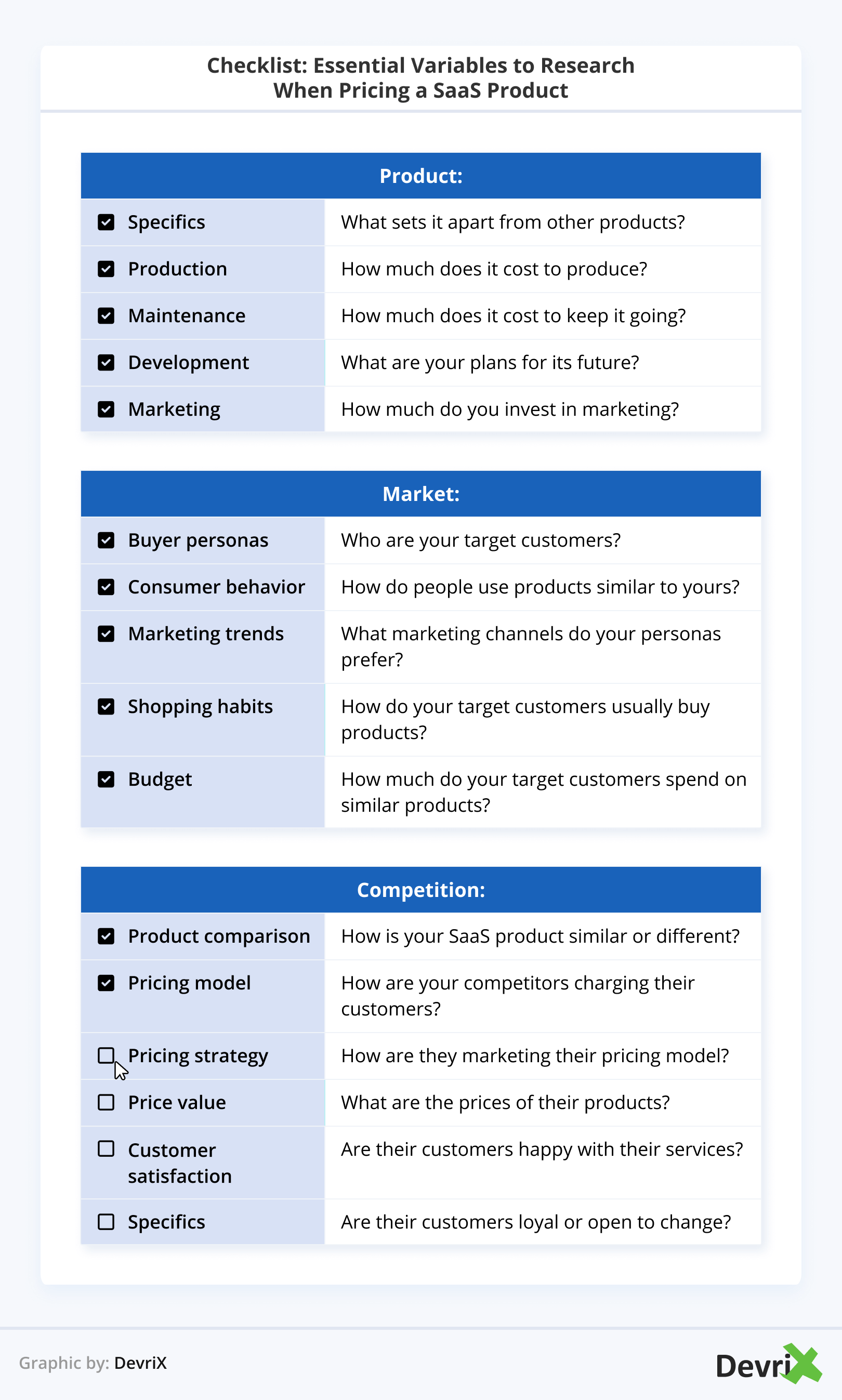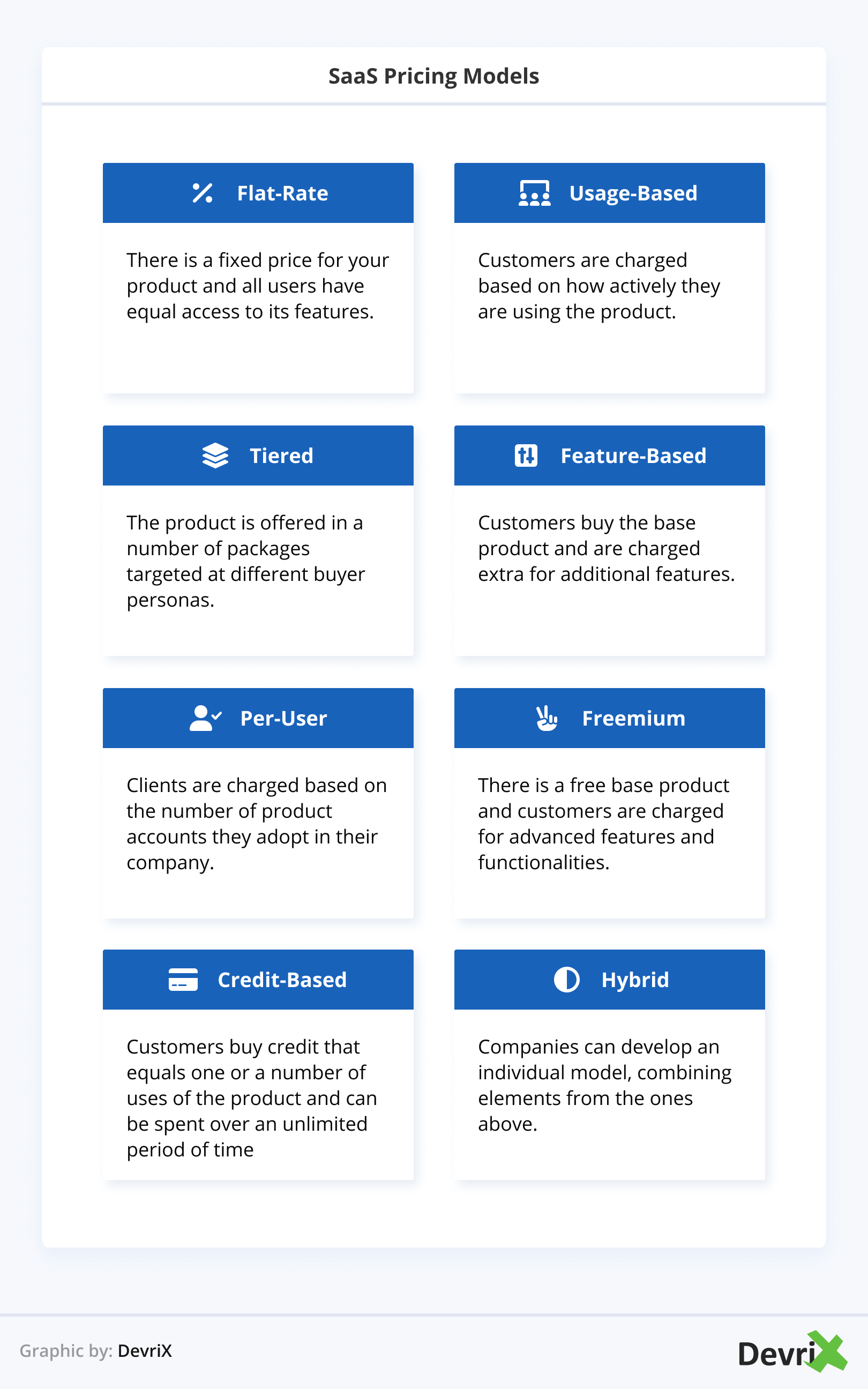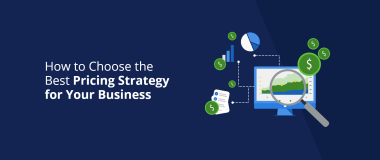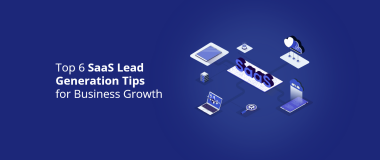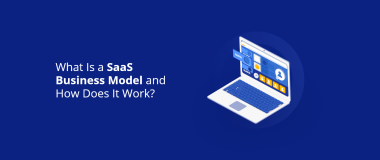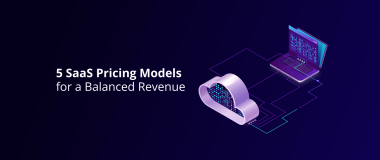Figuring out the optimal pricing strategy for your SaaS product is the key element for business growth. Although bringing in new leads is often considered by companies the core of scaling their enterprise and increasing revenue, pricing is, in fact, the foundation on which every aspect of your sales and marketing campaigns balances.
This makes choosing the right SaaS pricing strategy for your products essential to your success.
But what exactly is a pricing strategy?
SaaS Pricing Strategy
A SaaS pricing strategy is the method of positioning your products on the market and deciding how much to charge your customers for them. It incorporates the value you put into your product as well as the marketing tactics you leverage to make the price competitive and inviting to customers.
Developing a pricing strategy is a complicated task and involves a deeper knowledge of the market where the product will be placed, the competition, and the preferences of the buyers it will be targeted at.
The nature of SaaS products can make pricing an even more complex task than it already is. Since SaaS products are not simple, they comprise different features that can often be grouped into packages and sold separately, even though they may be part of the same product. Also, software evolves and changes over time and the pricing model and pricing strategy should reflect that.
That is why reviewing and updating your SaaS pricing strategy regularly is essential if you want to achieve optimal marketing and sales results and grow your business.
How to Choose the Right Pricing Strategy for Your SaaS Product?

Building a pricing strategy can easily be rushed and overlooked. It’s tempting to set your prices on a hunch or base them simply on how much you invest in designing and producing your product plus an added margin. But the fact is, that any strategy created on a single variable is flawed and can cost you massive amounts of revenue.
The price tag, be it a virtual one in the SaaS world or a physical one in a shop, is often the first thing the customer will reach for when considering buying a product. And it should make them feel they are getting a good bargain.
Furthermore, what you offer should be affordable but without devaluing the worth of your efforts and the quality of your service.
To achieve this balance, you have to invest the proper amount of time in studying all the variables involved in setting a price.
Study the 3 Variables: Product, Market, Competition
Although businesses can be different in many ways, the core factors at play remain the same:
- The product. All decisions regarding the pricing, marketing, and sales of your SaaS product should start with an analysis of the product itself. Its specifics and qualities should be the pivotal factor guiding your process.
- The Market. Next, you should focus on your target market and figure out your ideal customers’ profiles. These are your buyer personas and to be able to sell to them and offer them the best price, you should do your research to get to know them well.
- The competition. The competition, of course, is also a major factor. Knowing who you are up against in the marketplace can give you ideas on how you could do things better. Competitor research will also provide additional insights into your customers’ likes and dislikes.
In-depth research provides invaluable data you can leverage to devise a smart pricing strategy that can boost your revenue and help you grow your business.
Without this information, the changes you make will be random and so will be the results. Making data-driven decisions and testing strategies will allow you to optimize your pricing regularly and adjust it whenever the variables change.
When studying the pricing landscape, consider finding the answers to the following questions:
Product:
- Specifics. What sets it apart from other products?
- Production. How much does it cost to produce it?
- Maintenance. How much does it cost to keep it going?
- Development. What are your plans for its future?
- Marketing. How much do you invest in marketing?
Market:
- Buyer personas. Who are your target customers?
- Consumer behavior. How do people use products similar to yours?
- Marketing trends. What marketing channels do your personas prefer?
- Shopping habits. How do your target customers usually buy products?
- Budget. How much do your target customers spend on similar products?
Competition:
- Product comparison. How is your SaaS product similar or different?
- Pricing model. How are your competitors charging their customers?
- Pricing strategy. How are they marketing their pricing model?
- Price value. What are the prices of their products?
- Customer satisfaction. Are their customers happy with their services?
- Customer loyalty. Are their customers loyal or open to change?
Decide on a Pricing Model
While your pricing strategy represents the financial value of your product and how you position it in the marketplace, the pricing model is the method you use to charge your customers for using it.
If you are into metaphors, you can visualize the pricing model as the arrow and the pricing strategy like the bow that shoots it towards the goal.
Designing a pricing model for SaaS software is more complicated than doing the same for a simple product. SaaS companies charge their customers on subscription-based transactions. This, basically, means that instead of a single financial interaction, the client makes monthly or annual payments to the vendor.
What complicates the process further is that, as mentioned, SaaS products can be packed into different plans depending on the features they have. And if that is not enough, the software can be used with varying intensity, and can also be operated by multiple people in a company from different accounts.
This calls for careful consideration of how to balance product value, customer satisfaction, and revenue and build a model that will help you grow your business and keep your customers happy.
Businesses should design an individual model to fit their needs, their products, and their buyer persona’s profiles, but there are some base structures they can use as a foundation:
- Flat-Rate Model. There is a fixed price for your product and all users have equal access to its features.
- Usage-Based Model. Customers are charged based on how actively they are using the product.
- Tiered Model. The product is offered in a number of packages targeted to different buyer personas.
- Feature-Based Model. Customers buy the base product and are charged extra for additional features.
- Per-User Model. Clients are charged based on the number of product accounts they adopt in their company.
- Freemium Model. There is a free base product and customers are charged for advanced features and functionalities.
- Credit-Based Model. Customers buy credit that equals one or a number of uses of the product and can be spent over an unlimited period of time.
- Hybrid Model. Companies can develop an individual model, combining elements from the ones above.
You can read more about how the different pricing models can help you maintain a balanced revenue in DevriX’s article on the topic:
5 SaaS Pricing Strategies to Consider

It has been proven over time that figuring out the best pricing strategy for your SaaS product will secure you a steady income and business growth.
Different strategies open different paths towards market penetration, customer acquisition and retention, and product placement.
By considering the results of your research, the specifics of your industry, and the stage of development of your business, you can identify the strategy that responds to your goals and your vision for the future.
1. Penetration Pricing Strategy
The market penetration strategy is one often used by SaaS and other businesses when they are first stepping out into the marketplace. It calls for companies to initially lower their prices in order to occupy a large market share, and then gradually increase them once they have secured their position.
This strategy holds moderate risks in its early stages because the company can’t rely on quick income and might suffer losses due to intentionally undercharging its customers. However, it enables businesses to occupy a substantial market share and build a large audience that they can later upsell and cross-sell products to.
2. Skimming Pricing Strategy
The skimming pricing strategy is very common in the world of technology where users are eager to be early adopters of anything fresh and exciting. Relying on this, companies offer new products at artificially inflated prices that they slowly decrease over time. In a way, this strategy is the opposite of the market penetration one.
Skimming pricing can be very successful in emerging markets or to companies developing SaaS products that are unmatched by competition at that moment. By leveraging the novelty of their product, companies can capitalize on customers who want to be the first to try it out, and once the competition follows, they can cut the prices low. This way the company can keep their existing audience loyal, and, at the same time, leverage the lowering of prices to make their products affordable to customers with lower budgets, and grow.
3. Premium Pricing Strategy
Premium pricing can be considered as a psychological approach. The goal here is to present your product as superior to the competition’s and more luxurious. It sells at a higher price and to an exclusive audience. To be successful, it should be synced with a matching brand identity and marketing strategy.
High-end customers are attracted to the sense of prestige these products provide and are willing to pay the high price because it is well known that only a fistful of companies can afford it.
In SaaS, this means that your product should be known as the best quality in its niche and you should be able to maintain and further develop it to remain such. This will secure you big-game customers and continue to bring in revenue that will grow your business.
4. Economy Pricing Strategy
The economy pricing strategy is the opposite of the premium one. While one relies on a few wealthy customers, the other counts on much small business (SMB) clients on a budget.
The goal here is to offer a quality product that is a stripped-down version of the top performers in your niche and that low-income customers can’t afford.
The growth potential of this strategy comes from the fact that there are always startups and growing SMB that need SaaS services but don’t have the budget for anything fancy. Even if they “graduate” from your product and move on to a more advanced one, you will have newcomers to take their place. Or if you want to keep them around, you can design a tier pricing model that offers packages for every stage of their development.
5. Value-Based Pricing Strategy
A Value-based pricing strategy is a holistic approach to estimating the financial worth of your SaaS product and probably the best strategy you can choose. Instead of playing mind games with the market, you can focus your attention on what your customers need and the value your product can provide.
The key here is to take into account all factors but prioritize how you can improve your product to match your customer’s expectations. Basing your prices on this information and adjusting them accordingly when changes occur will secure you steady revenue and growth.
Recap
Pricing your SaaS products is an ongoing process that requires research, dedication, and constant adjustments. It’s the foundation of your business success and no marketing and sales strategy can prosper if your pricing is flawed or off-balance.
You can try different strategies for different products and test out the variables until you find the path that leads you to your goals and objectives.
However, the most important thing to remember is that your work here is never done. Regularly review and adjust your prices, your model, and your strategy, and you will achieve noticeable results.

